
Spectacled Eiders, Barrow June 2024 by Chris Townend
Tour Dates: Thursday 12th – Wednesday 25th June 2025 (Anchorage to Anchorage)
Tour Price (to be confirmed): £6,999pp including internal flights
Optional Pre-Tour Smith’s Longspur Extension: Tuesday 10th – Thursday 12th Price TBC
Estimated International Flight Price: London to Anchorage approx. £1,100 return
Deposit: £1,000 per person
Conservation Donation from Wise Birding: £275
Minimum Number: 6 people
Maximum Group Size: 8 people
Target Species
Birds:
Spectacled Eider, Steller’s Eider, King Eider, Harlequin Duck, White-billed Diver, Horned Puffin, Tufted Puffin, Parakeet Auklet, Rhinoceros Auklet, Marbled, Murrelet, Ancient Murrelet and Kittlitz’s Murrelet, Brunnich’s Guillemot, Pigeon Guillemot, Red-faced Cormorant, Emperor Goose, Gyrfalcon, Willow and Rock Ptarmigan, Slaty-backed Gull, Sabine’s Gull, Snowy Owl, Aleutian Tern, Long-tailed Skua, Pacific Golden-Plover, Western Sandpiper, Rock Sandpiper, Bristle-thighed Curlew and more!
Mammals:
Black Bear, Brown Bear, Moose, Muskox, Sea Otter, Humpback Whale, Orca and maybe Beluga Whale. Plus chances for Polar Bear and Canada Lynx.
Tour Summary:
Alaska has to be on every birder’s wish list as it has many outstanding birds, stunning scenery, almost 24 hour daylight and great potential to find rare vagrants too, so come and join us! This tour focuses on three of the best birding areas in Alaska, namely Nome, Barrow and the Kenai Fjords National Park. Our itinerary maximises our time at Barrow and Nome as well as having extra time for any delays that might occur due to weather.
Nome is located on the south coast of the Seward Peninsula in northwest Alaska, just below latitude 65. The terrain consists of rolling tundra covered with grasses, willows other shrubs and an impressive array of wildflowers during the brief summer months. Key birds we will look for around Nome include: all four species of Eider, Emperor Goose, Gyrfalcon, Willow and Rock Ptarmigan, Slaty-backed Gull, Aleutian Tern, Long-tailed Skua, Pacific Golden-Plover, Bristle-thighed Curlew and more! Other wildlife we may find on the Seward Peninsula includes Brown (Grizzly) Bear, Moose, Caribou, Muskox, and possibly Wolf or even Canada Lynx. Barrow is a birder’s paradise situated in the high arctic tundra where we should find abundant King and Common Eiders as well as the highly sought after and stunning Steller’s and Spectacled Eider. Yellow-billed Loons migrate past the point but can also be found in small numbers on freshwater pools, whilst Snowy Owls and Long-tailed Skuas patrol the tundra in search of lemmings. Displaying shorebirds will also be high on our target list with Red Phalarope, Long-billed Dowitcher, Pectoral Sandpiper and American Golden Plover. We may also get lucky with a chance of seeing a Polar Bear whilst birding in the midnight sun! Kenai Fjords National Park will be a definite tour highlight as we take a full day boat trip in search of birds and mammals surrounded by some of the most spectacular landscapes in Alaska. We will look for Horned and Tufted Puffins, Parakeet Auklets, Thick-billed Murres, Marbled, Ancient, and Kittlitz’s Murrelets, Rhinocerous Auklets, Pigeon Guillemots, and Red-faced Cormorants. Mammals may also include Humpback Whale, Orca, Steller’s Sea Lion and Sea Otter.

“Red” Phalarope in Barrow by Chris Townend
Accommodation: 13 nights in Alaska
2 nights Anchorage, 3 nights Nome, 1 night Anchorage, 2 nights Seward, 1 night Anchorage, 3 nights Barrow and 1 night Anchorage
Inclusive Meals: Breakfasts and lunches – See
DAY 1: Arrival Day
Today is primarily an arrival day and flights are most likely to arrive in the evening. However, our hotel is just a short transfer and a great base for some very relaxed birding just outside the door on Lake Hood where wildfowl such as Barrow’s Goldeneye, Greater and Lesser Scaup and Redhead are possible along with Pacific and Great Northern Divers. Dinner is available at the hotel and a good rest ready for the local flight to Nome the following morning. Overnight Anchorage
DAY 2: Anchorage birding
Today will be a full day to focus on boreal targets near Anchorage. We will search for American Three-toed and Black-backed Woodpeckers, Spruce Grouse, Canada Jay, and Boreal Chickadee. Depending on tides, we may also check a few Anchorage shorebird spots for late migrants and local breeders. These may include breeding Short-billed Dowitcher and Hudsonian Godwit. If we have more time available there is a chance of reaching some other nearby birding areas such as the Arctic Valley or Potter Marsh, dependent on what species we wish to target. Overnight Anchorage
DAY 3: Internal flight to Nome and Birding Nome
We will take a morning flight of around 80 minutes to Nome, on the Seward Peninsula in western Alaska. We will explore the start of the Council Road where some of our first Nome highlights are likely to be Eastern Yellow Wagtail, Bar-tailed Godwit, Pacific Golden-Plover and if we are lucky, Red-necked Stint too. The list of targets for this sub-arctic habitat is very impressive and includes Arctic, Pacific, Red-throated, and Yellow-billed Loons, up to four species of Eider, Emperor Goose, Gyrfalcon, Willow and Rock Ptarmigan, Slaty-backed Gull, Aleutian Tern, Long-tailed Skua, Pacific Golden-Plover and the highly prized Bristle-thighed Curlew. Passerines should include Northern Wheatear, Bluethroat and Eastern Yellow Wagtail. Mammals we will be looking for include Muskox, Brown (Grizzly) Bear, Moose and Wolf. Overnight Nome
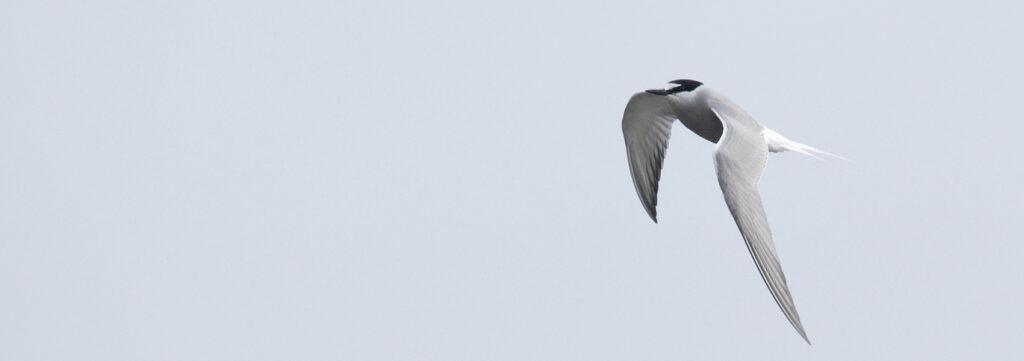
DAYS 4 & 5: Birding the Nome Area
It is possible to see all the specialities around Nome with just a 2 night stay, but our itinerary gives us more time to enjoy our birding and allows extra time if we miss anything on our first attempt. There are three main roads leaving Nome, namely the Council Road, Teller Road and Kougarok Road. We will have time birding on each of them during our time in Nome. After breakfast we will head out for the day with picnic lunches so as to maximise our time in the field. The beauty of birding in this area is that most of the targets in Nome can be found from or near the roadside! The one exception is the Bristle-thighed Curlew, which requires a moderately strenuous hike across tundra tussocks where we hope to find the bird on its breeding territory. On one day we will travel along Kougarok Road, most famed amongst birders as the place to see Bristle-thighed Curlew. It will be an early start to give us the best chance of finding this very rare breeding bird. After hopefully being successful with the Curlew, we will then make numerous birding stops on our way back to town in search of birds such as Bluethroat, Gyrfalcon and Ptarmigan as well as commoner species such as Lapland Bunting, Golden-crowned Sparrow, Fox Sparrow and Wilson’s Warbler. On another day, we will travel along the Council Road and visit the Safety Lagoon and nearby tundra habitat. The road follows the Bering Sea for the first 30 miles, with Safety Lagoon on the inland side of the road for much of that distance. Exciting possibilities here include Emperor Goose, all four eiders, Arctic Loon, Aleutian Tern and Slaty-backed Gull. We may also try for Arctic Warbler, a species that breeds in Nome. It is a late arriving migrant and if we find one it is often not until the last day of the trip. Overnight Nome
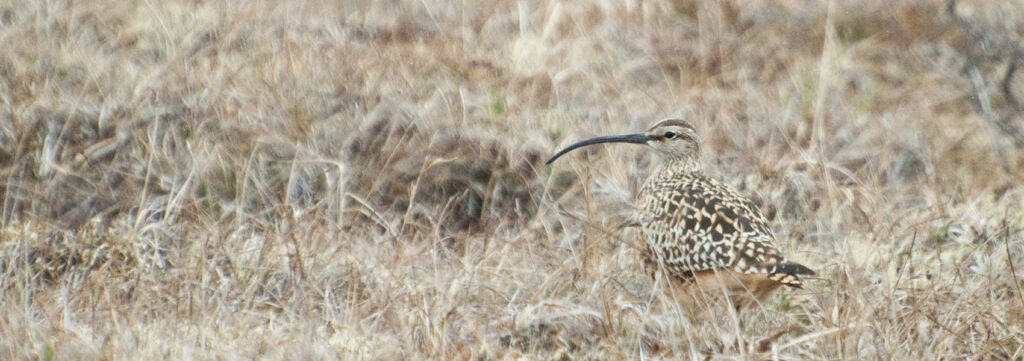
DAY 6: Final birding in Nome – Return to Anchorage
We will take a late afternoon/early evening flight back to Anchorage, so we still have at least a full morning to target any species that we may have missed or to try and obtain better views of certain species. Seawatching is also an option for divers and seaduck or we can simply re-visit nearby sites like the Nome river mouth and simply absorb the spectacle of waders and Aleutian Terns. Overnight Anchorage

Steller’s Eiders by Aaron Lang
DAY 7: Anchorage to Seward
This morning we will take the 130 mile drive to Seward. We will of course make numerous birding stops en route as we travel along this incredibly scenic route and we have the whole day available with no rush to get to Seward. The forest changes from an interior/boreal forest to coastal rainforest as we approach Seward. Possible species today include Red and White-winged Crossbill, American Dipper, Rufous Hummingbird, Chestnut-backed Chickadee, Steller’s Jay, Pacific Wren, Townend’s Warbler and many other species. Possible mammals today include Dall Sheep, Moose, and depending on the tide, Beluga Whales are a distinct possibility in Turnagain Arm. Overnight Seward
DAY 8: Boat Trip in Kenai Fjords National Park
Today we take an eight-hour boat trip to the Kenai Fjords National Park. The trip will focus on birds, mammals, and natural history and we will be surrounded by some of the most spectacular scenery in Alaska. Birding targets today are many and include species such as Horned and Tufted Puffin, Parakeet Auklet, Rhinoceros Auklet, Brunnich’s Guillemot, Marbled, Ancient, and the rare and localised Kittlitz’s Murrelet. We should also find Pigeon Guillemot, Harlequin Duck, Surf Scoter, Red-faced Cormorant, and Bald Eagle. Depending on weather conditions, a few of the tubenoses are also possible, including Fork-tailed and Leach’s Storm-Petrel. Of course, we will also be looking for mammals such as Humpback Whale, Orca, Steller’s Sea Lion and Sea Otter. Overnight Seward
DAY 9: Seward to Anchorage and internal flight to Barrow
We make the return trip to Anchorage today, or if the Kenai boat trip was cancelled due to poor weather, we have this as our back up day to tryagain.
Assuming the boat trip was not cancelled, then we will have the morning to seek out a few target species we may have missed before heading back to Anchorage. Sites close to Seward can reveal a number of key species such as Varied Thrush and Pine Grosbeak as well as other localised birds such as Chestnut-backed Chickadee, Hermit Thrush and the dark subspecies of Song Sparrow. Once again, we have the whole day to make this journey and we can again spend time looking for new species as well as having further chances for Beluga and other mammals such as Brown Bear. Overnight Anchorage
Day 10: Flight to Barrow
We will take a morning flight to Barrow, the northernmost city in the United States. It is situated well above latitude 71N, the sun doesn’t set here from May 10th to August 2nd. The town sits on the Chukchi Sea side of Point Barrow, the geographic landmark separating the Chukchi Sea to the west and the Beaufort Sea to the east, both within the Arctic Ocean. The weather is highly variable and we should plan for fog, rain, wind, and snow while hoping for sun! Once in Barrow, we will begin birding the tundra, ponds, and waterfront. It’s breeding season here in the arctic and we’ll enjoy a long list of displaying shorebirds and waterfowl. The main targets here are Snowy Owl, Yellow-billed Loon, and of course the Eiders, with all four species possible! Overnight Barrow
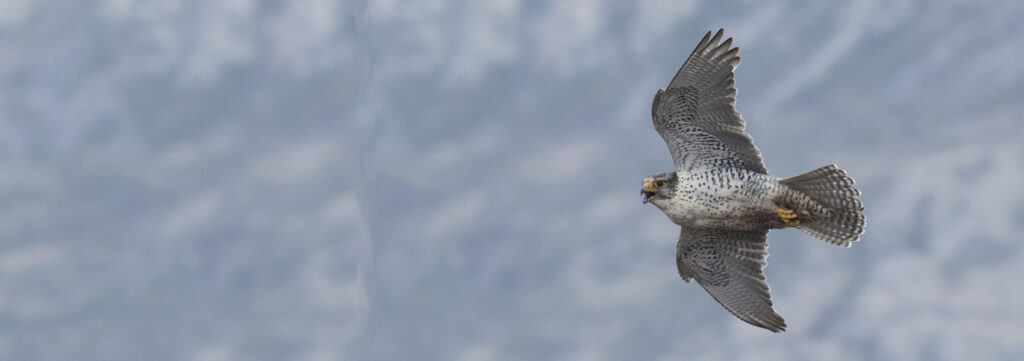
DAYS 11 and 12: Birding Barrow
We have two full days of birding ahead of us! Probably the most sought after species in Barrow, are the ducks with Spectacled, Steller’s and King Eiders all key targets though we will of course spend time looking for these species. Breeding plumaged shorebirds here are typically confiding and often give great photographic opportunities. Dunlin are numerous, as are Pectoral Sandpiper and the males low display flights and booming call is a familiar sound of the tundra around Barrow. Other shorebirds that should be displaying during our visit include Red and Red-necked Phalarope, Long-billed Dowitcher, Western Sandpiper and Semipalmated Sandpiper. We also hope to find the less common species like American Golden-Plover and chances for Buff-breasted and Stilt Sandpiper. An optional trip to the Point at Barrow can be organised for those that wish to try to see Polar Bear, but this varies from year to year.
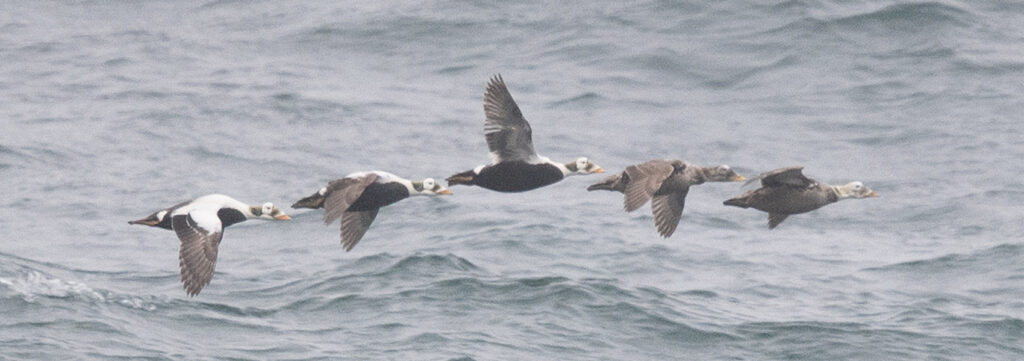
Depending on ice conditions, it is sometimes possible to find Polar Bear in Barrow in June and sometimes they can be seen without visiting the Point itself. The area north of Barrow is certainly our best chance of finding a bear and although it is becoming increasingly difficult, we will of course try our best and we will remain in contact with local guides. If a bear is sighted, then news usually travels fast! Other mammal possibiliies include Arctic Fox, Ringed, Bearded, and Spotted Seals amongst the sea ice and occasionally Walrus. Overnight Barrow
DAY 13: Birding Barrow – Return flight to Anchorage.
We have most of the day to enjoy birding around Barrow to look for any target species that we may have missed and a final chance for Polar Bear. After an early dinner in Barrow we will then take an early evening flight back to Anchorage. Overnight Anchorage
Day 14: Depart for UK
After breakfast in our Anchorage hotel we will head for the airport for our return flight home. A flight later in teh day is best, just in case of any weather related flight delays from Barrow the previous day.
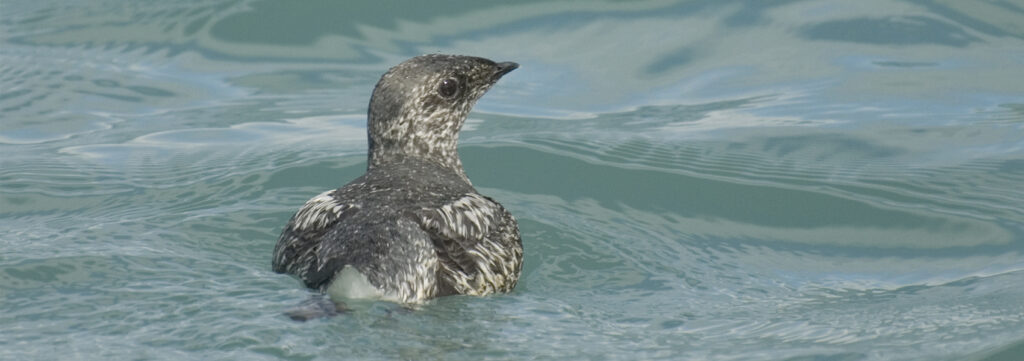
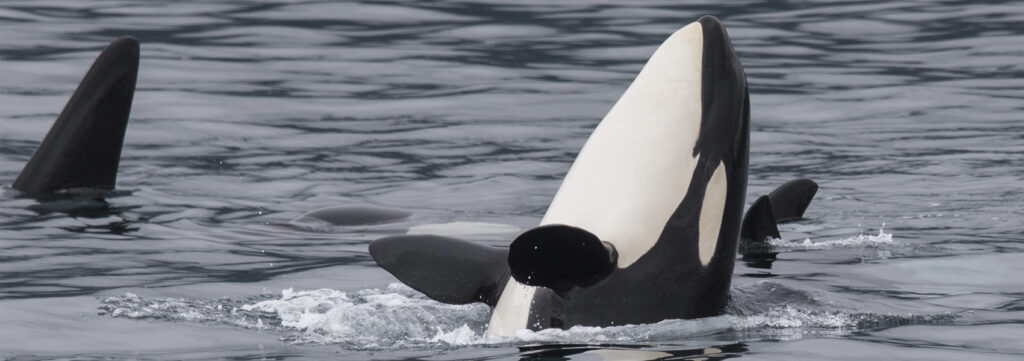
Please note this is a flexible itinerary which may need to be adjusted slightly dependent on arrival / departure times, weather conditions and the most recent information from our local guides
Leaders: Aaron Bowman or Aaron Lang.
Included in cost: Accommodation, ground transport and meals (breakfast and lunches only). Inclusive breakfast & lunches start with breakfast on day 2 and end with breakfast on day 14.
All entrance fees, all transport including, boat trip in Kenai Fjord NP, domestic flights, plus services of the local guides / leader.
Not included in cost: International airfare, travel insurance, meals other than those stated above, all alcoholic drinks and any airport/visa fees. Plus an optional trip to the Point at Barrow.
Single Supplement: Very expensive, so best to share. Estimated £1,350pp
Transport: We will travel in 1 or 2 minibuses (dependent on group size) giving everyone space and a window seat. Whilst in Barrow we may have Pick-up Trucks dependent on vehicle availability.
Difficulty: Easy Walking: While we don’t tend to walk long distances on any particular day in Alaska, daylight hours are very long in the land of the midnight sun! Therefore our time in the field will often mean we are often out early and late in the day which are often best for bird activity. The longest walking day is when trying for Bristle-thighed Curlew. On this day we will be walking on uneven grass hummocks in the tundra for up to 3 miles.
Accommodation: Good quality hotels throughout the tour.
Climate: Highly variable! Anchorage can sometimes be quite warm at this time of year whereas Barrow is likely to be cold, possibly even below freezing. Wind is often present in this region and can make temperatures feel colder too, particularly during the boat trips. Rain is also likely at some point during the tour. Therefore good warm layers and waterproofs are essential.
Tour Start Point: Anchorage airport, USA
Tour End Point: Anchorage airport, USA
Suggested Airlines: United Airlines
